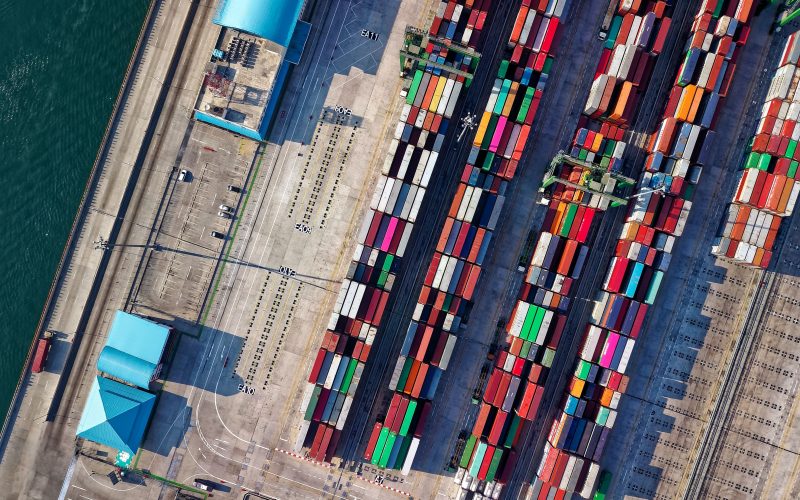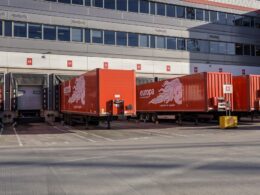Just a year ago, finding a packet of toilet paper on your local supermarket’s shelves was like striking gold. The past year has taught us the value of a steady supply chain, and just how quickly an unexpected event can throw things into turmoil. For companies operating in transport and logistics, a comprehensive communications setup is the secret to smooth-running and delay-free operations. What do businesses need to consider when it comes to their communications infrastructure? Here, Kristian Torode, Director and Co-Founder of business communications system provider Crystaline, investigates.
The pandemic placed unprecedented pressure on global supply chains, sparked by the increased popularity of e-commerce as consumers turned to online retail out of necessity rather than preference. Consumer-facing brands were forced to rapidly change their strategies to accommodate accelerated growth, and many were successful. According to GlobalData, nine of the world’s top ten e-commerce companies reported double-digit growth in revenue over the pandemic.
However, this unexpected growth didn’t come without some teething problems. The start of lockdown came with several weeks of empty supermarket shelves, as panic buying struck the nation. Logistics companies had to work together to ensure access to food, medicine and other essential supplies through multiple lockdowns. Communication has proven essential, but how can companies upgrade their current setup?
Accessible from anywhere
One of the most valuable qualities for a transport and logistics communication setup is accessibility. Information needs to be available to employees, no matter where they’re located. Opting for a cloud-based IT system, where inventory, finance and other in-house systems are all kept in one space is extremely effective, allowing employees to access all information in real time.
Combining the cloud with a unified communication (UC) system empowers departments to collaborate using integrated tools. Applications like Microsoft Teams allow employees to communicate freely across all business functions, and over several device types, for faster decision making. Simple, intuitive communication tools allow companies to optimise routes and schedules and overcome travel disruption with ease.
For customer service teams, a unified communication system like Vodafone One Net allows companies to offer a multi-channel contact experience — customers can get in touch in their preferred way. Customer service can be streamlined even further with the
addition of intelligent call routing and SIP trunking, which provide business continuity and ensure that you never miss a call.
Tailored device choice
It’s all very well having access to a comprehensive UC system, but device selection must also be considered. For employees completing physical work, such as warehouse operatives and delivery drivers, it’s worth selecting handsets that have been tested against MIL-STD-810 standards to satisfy their suitability for rugged operations.
MIL-STD-810 validates equipment’s suitability for harsh environmental conditions. Originally used for military-grade equipment, MIL-STD-810-certified devices are proven to withstand shock and vibration. Warehouses and transport can expose devices to damage like dust, dents and debris so it’s important to select devices suited to these applications, such as the lightweight handheld Samsung Galaxy X Cover Pro.
In contrast, those working in management roles may find more use in tablets or larger devices that allow them to coordinate several tasks and manage people simultaneously, while those working in an office environment may prefer a desktop computer. A UC communication system combined with carefully selected devices enables smooth collaboration between departments without compromising on user-friendliness.
Level up with IoT
Internet of Things (IoT) has many uses across many different industries, connecting smart devices to the Internet to optimise processes and streamline operations. For transport and logistics, IoT can be valuable in reducing risk. In 2019, 196 billion tonne kilometres of domestic freight was transported throughout the UK by road, water and rail. The companies coordinating this network must mitigate the risk of delays, diversions and physical damage to goods.
The transportation of goods come with the risk of loss, since visibility is typically poor with no option to track items. However, by using IoT-enabled asset tracking this could be avoided. IoT communications services such as Vodafone’s Fleet Management Services allow logistics companies to track their vehicles in real time to offer enhanced customer service with accurate ETAs and optimised route guidance to handle unexpected traffic or diversions.
Transport and logistics are the beating heart of the nation, ensuring every single supply chain remains operational. The pandemic taught us the value of this sector, but companies should finetune their communications set up to overcome obstacles before they realise.
Want to hear more about how Crystaline can help your transport and logistics business can streamline its communication setup? Get in touch today here.













